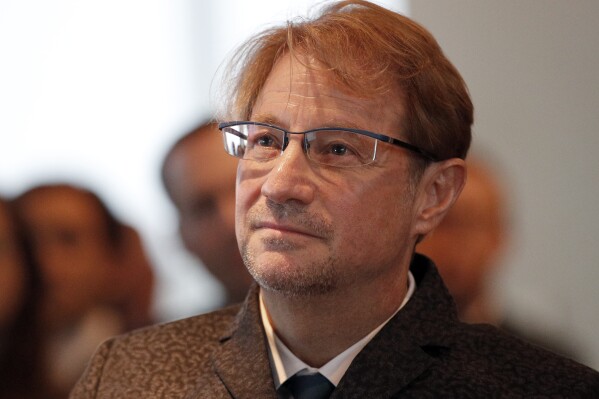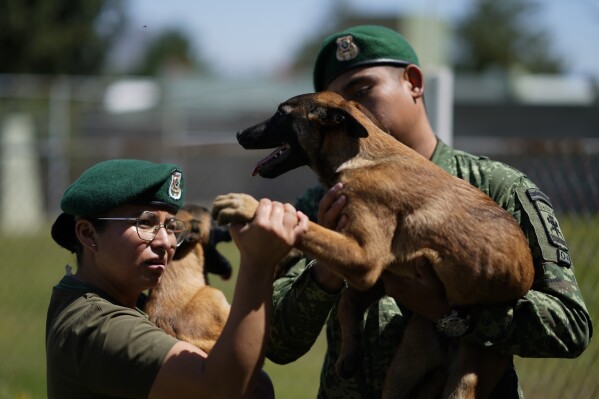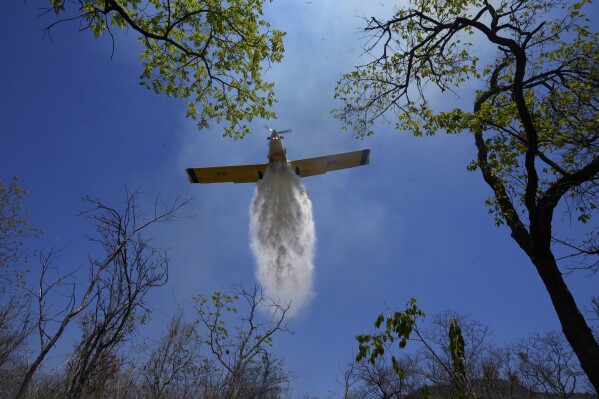MEXICO CITY (AP) — Chanting in unison, students marched through downtown Mexico City on Monday evening, marking 55 years since the military massacred hundreds of students in Tlatelolco plaza.
Enrique Treviño Taudres survived the massacre and now marches every year with the Pro Democratic Freedoms 68 Committee. “People know a lot and forget easily,” he said, adding that the memory of Tlatelolco holds important lessons for modern Mexico.
As many as 300 people were massacred at a student protest in Tlatelolco plaza on Oct. 2, 1968, in what the Mexican government initially reported as the lawful suppression of a violent riot just 10 days before the Summer Olympics’ Opening Ceremony in Mexico City.
Since then military reports have revealed at least 360 government snipers were stationed on rooftops around the square. They opened fire and, in the ensuing chaos, the military members posted round the square began shooting peaceful protesters and students.
Other news
 Israel arrests Mexican former diplomat wanted for alleged sexual assault, Mexico’s president says
Israel arrests Mexican former diplomat wanted for alleged sexual assault, Mexico’s president says Mexico’s rescue and drug-sniffing dogs start out at the army’s puppy kindergarten
Mexico’s rescue and drug-sniffing dogs start out at the army’s puppy kindergarten AP Week in Pictures: Latin America and Caribbean
AP Week in Pictures: Latin America and Caribbean
“Look, it’s a commemoration of that day but it is also a call to the current students, the current young people to be aware of the reality,” said Treviño. “The best example that we grandparents can give young people is that we were conscientious and committed young people. We took to the streets.”
Adolfo Cruz, a tourism student in the city, marched on Monday for the first time. “Part of this is remembering all our deceased companions because it’s thanks to them we have the right to march today,” Cruz said. “We also want to change things.”
Mexican students today still find themselves the victims of violence and organized crime. In 2018 three university students in the western city of Guadalajara were killed by a gang and their bodies dissolved in acid. Infamously, 43 students were abducted and murdered in southern Mexico in 2014, the victims of an attack which implicated municipal, state and national authorities.
October 2nd, said Cruz, “is a commemoration, but it’s also for the rights of all students,” in a country where there are still “many difficulties” across the education system.
After the massacre in 1968, 25 people were officially reported dead, but later investigations identified 44 remains. Successive government inquiries have never shown exactly how many died, but eyewitnesses claimed bodies were carted away from the square and estimates range that over 300 were killed.
The Mexican government acknowledged the massacre was a “state crime”on its 50th anniversary in 2018.
Earlier on Monday, interim head of Mexico City’s government Martí Bartes spoke about the historical ramifications of the tragedy.
“‘68 is so strong because it transformed political culture from below,” he said from the Plaza of the Three Cultures, where the protest began in 1968. “’68 transformed universities, massively expanded higher education, incorporated new critical thinking into the social sciences, generated activists, opened the doors to new ideas such as feminism or sexual diversity.”
A rainy Monday night marked the end of a run of protests in Mexico’s capital: from the anniversary of the 43 abducted students in southern Mexico last Tuesday, to a march for abortion rights Thursday. Since last week, monuments have been hiding behind blue barricades across the city and the Marabunta Brigade, a group trained to keep protestors safe, has been busy.
Monday evening was Mario Romero’s 20th protest as a member of the brigade but, he said, he was not tired, or afraid.
“I like to come out because things need to change, but nothing changes,” he said.
